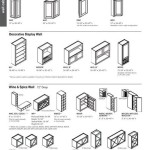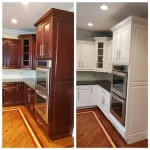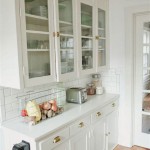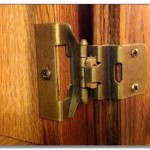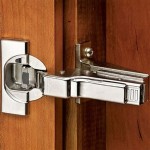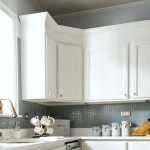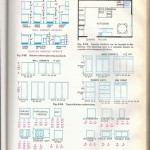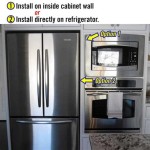Can You Repaint Kitchen Cabinets Without Sanding? A Detailed Guide
Repainting kitchen cabinets is a popular home improvement project undertaken to refresh the appearance of a kitchen without the expense of complete cabinet replacement. Traditionally, sanding has been considered a crucial preliminary step to ensure proper paint adhesion. However, advancements in paint technology and surface preparation techniques have introduced the possibility of repainting kitchen cabinets without sanding. This article explores the conditions under which sanding can be bypassed, the alternative surface preparation methods, and the materials required for a successful no-sand cabinet repainting project.
Sanding serves several key purposes in preparing a surface for painting. It creates a slightly rough texture, providing the paint with "tooth," allowing it to grip the surface more effectively. Sanding also removes existing gloss, which can hinder paint adhesion. Additionally, it helps to smooth out minor imperfections, contributing to a more even and professional finish. While sanding is generally beneficial, it can be a time-consuming and labor-intensive process, especially in kitchens with intricate cabinet designs or numerous cabinets.
The feasibility of repainting cabinets without sanding depends largely on the existing cabinet finish and its condition. Cabinets with a high-gloss finish, peeling paint, or significant imperfections will likely require sanding to achieve optimal results. However, cabinets with a relatively clean, matte, or slightly worn finish may be suitable for a no-sand repainting approach. The key is to ensure proper surface preparation using alternative methods that promote paint adhesion.
Assessing Cabinet Suitability for No-Sand Painting
Before committing to a no-sand cabinet repainting project, a thorough assessment of the cabinet surfaces is essential. Several factors need to be considered to determine if sanding can be avoided.
First, examine the existing finish. If the cabinets are covered in multiple layers of old paint, are chipped, cracked, or peeling, sanding is likely necessary to create a smooth, stable base for the new paint. Similarly, cabinets with a very glossy or slick surface require sanding to create the required "tooth" for paint adhesion. Lightly scuffed or matte finishes are generally more amenable to no-sand techniques.
Second, check for any signs of damage, such as water stains, grease splatters, or mold growth. These issues need to be addressed before painting. Water stains may indicate underlying structural problems that need repair, while grease and mold can prevent proper paint adhesion and lead to future problems. While some of these issues can be cleaned, heavily soiled or damaged surfaces might require localized sanding or repair.
Third, consider the type of paint previously used on the cabinets. If the existing paint is oil-based and you plan to use a latex-based paint, proper adhesion can be a concern. While some primers are designed to bridge the gap between oil-based and latex-based paints, sanding is often the most reliable method to ensure a strong bond. In this situation, a light sanding to create a porous surface may be sufficient, rather than a complete removal of the existing finish.
Finally, assess the overall condition of the cabinets. If the cabinets are structurally sound and the existing finish is in reasonably good condition, a no-sand approach is more likely to be successful. However, if the cabinets are warped, damaged, or have significant imperfections, addressing these issues through sanding and repair will ultimately result in a more professional and durable finish.
Alternative Surface Preparation Methods for No-Sand Painting
When sanding is not the preferred or necessary option, alternative surface preparation methods become crucial for ensuring proper paint adhesion and a long-lasting finish. These methods primarily involve thorough cleaning and the use of deglossers or bonding primers.
The first and most important step is cleaning. Cabinets are often subjected to grease, grime, and food splatters, which can significantly hinder paint adhesion. A thorough cleaning with a strong degreaser is essential. Trisodium phosphate (TSP) is a traditional choice, but phosphate-free alternatives are available and environmentally friendly. Follow the manufacturer's instructions carefully when using cleaning products, and be sure to wear appropriate protective gear, such as gloves and eye protection. Rinse the cabinets thoroughly with clean water after cleaning and allow them to dry completely before proceeding.
After cleaning, a deglosser can be applied to dull any remaining sheen on the cabinet surfaces. Deglossers are chemical solutions that etch the existing finish, creating a slightly porous surface for the paint to grip. Apply the deglosser according to the manufacturer's instructions, typically using a clean cloth or sponge. Avoid oversaturation, and allow the deglosser to work for the recommended time before wiping it off with a clean, damp cloth. This step is particularly important for cabinets with a semi-gloss or gloss finish.
Finally, a bonding primer is often necessary to ensure proper paint adhesion, especially on cabinets with potentially problematic surfaces. Bonding primers are specifically formulated to adhere to slick or difficult-to-paint surfaces, creating a solid base for the topcoat. Choose a high-quality bonding primer that is compatible with the type of paint you plan to use for the finish coat. Apply the primer evenly, following the manufacturer's instructions regarding application method and drying time. Some bonding primers may require multiple coats for optimal performance. The primer stage is arguably the most important step after cleaning when opting to bypass sanding.
In some cases, a combination of these methods may be necessary. For example, heavily soiled cabinets may require multiple cleaning cycles, while cabinets with a particularly stubborn finish may benefit from both a deglosser and a bonding primer.
Materials Required for a No-Sand Cabinet Repainting Project
Successfully repainting kitchen cabinets without sanding requires careful selection of the right materials. The following list outlines the essential items needed for this type of project:
First, a strong degreasing cleaner is crucial. Opt for a product specifically designed to remove grease and grime from kitchen surfaces. TSP or a phosphate-free alternative are good options. Ensure you have appropriate safety equipment, including gloves and eye protection, when handling these cleaning chemicals.
Next, a deglosser is necessary if the cabinets have a glossy finish. Choose a deglosser that is compatible with the type of paint you plan to use. It is essential to read and follow the manufacturer's instructions carefully for safe and effective application.
A high-quality bonding primer is essential for ensuring proper paint adhesion. Select a primer that is specifically designed for slick or difficult-to-paint surfaces. Primer selection process has to be aligned with the top coat to enable seamless coating application that is durable.
Choosing the right paint is paramount. Latex-based paints are generally a good choice for kitchen cabinets, as they are durable, easy to clean, and available in a wide range of colors and finishes. Consider using a paint specifically formulated for cabinets or furniture for enhanced durability and resistance to wear and tear. Acrylic paints are also a worthy option.
Application tools are also important. High-quality paintbrushes and rollers are essential for achieving a smooth, even finish. Use brushes with synthetic bristles for latex-based paints, and choose rollers with a nap appropriate for the cabinet surface. For a spray finish, a paint sprayer may be used however, that warrants additional safety equipment and preparation of the surrounding areas. Ensure good ventilation in the work area, especially when using solvent-based paints or sprayers.
Additional supplies include: drop cloths or plastic sheeting to protect surrounding surfaces, painter's tape to mask off areas you don't want to paint (such as walls, countertops, and hardware), clean cloths or sponges for cleaning and applying deglosser, a putty knife to fill any minor imperfections, and sandpaper (in case minor sanding is needed in specific areas).
Thorough preparation, careful material selection, and the use of appropriate techniques are crucial for achieving a successful no-sand cabinet repainting project. While sanding is often the preferred method for ensuring optimal paint adhesion, alternative surface preparation methods can provide excellent results when applied correctly. Understanding the specific requirements of the project and following the recommended guidelines will contribute to a long-lasting and aesthetically pleasing finish.

How To Paint Kitchen Cabinets Without Sanding Sustain My Craft Habit

How To Paint Your Cabinets In A Weekend Without Sanding Them Chris Loves Julia

How To Paint Kitchen Cabinets Without Sanding The Budget Decorator

Can You Paint Kitchen Cabinets Without Sanding

How To Paint Kitchen Cabinets Without Sanding Or Priming

How To Paint Cabinets Without Sanding A Fresh Squeezed Life

Painting Over Oak Cabinets Without Sanding Or Priming Hometalk

How To Paint Cabinets Without Removing Doors House Mix

Diy How To Paint Cabinets Without Sanding Vlog

How To Paint Fake Wood Kitchen Cabinets Simple Made Pretty 2024
Related Posts

